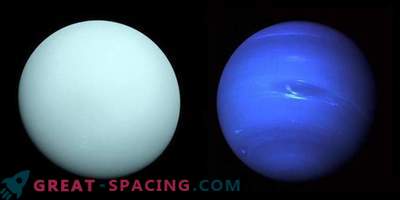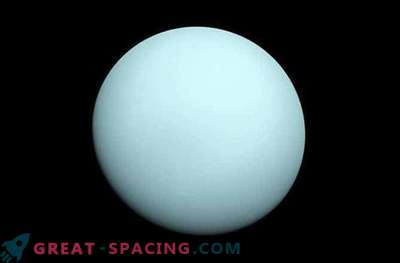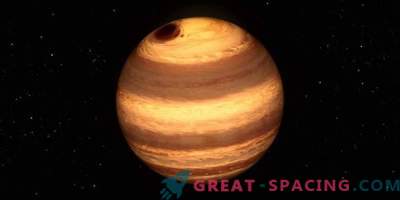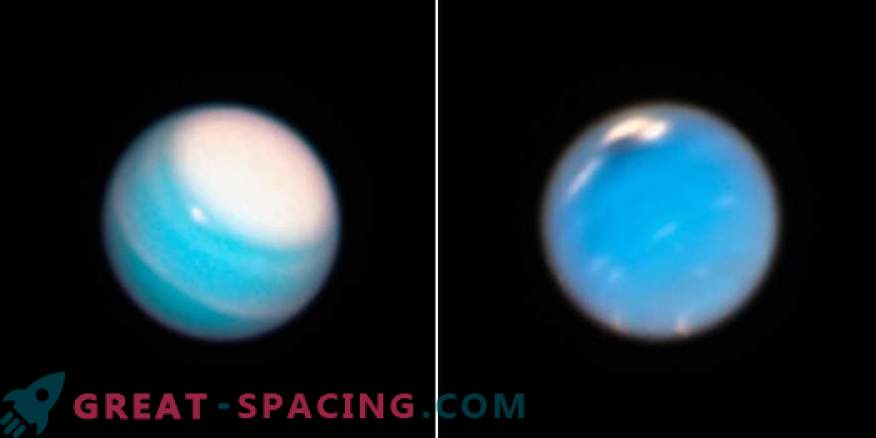
During the standard annual weather monitoring of the outer planets of the solar system, the Hubble Space Telescope recorded a new dark storm on Neptune (right) and re-looked at the long storm around the northern polar region of Uranus
Every year the Hubble Space Telescope monitors the weather on the outer planets of the solar system. This time he managed to examine a new mysterious storm on Neptune and re-inspect the long-lived storm around the northern polar region of Uranus.
Uranus and Neptune pass through the same seasons as the Earth, affecting the characteristics of the atmospheric layer. However, their seasons are longer, so they cover not months, but decades. A new Hubble survey demonstrates a dark storm on Neptune (top center).
The formation arose during the southern summer, and is considered the fourth and last mysterious whirlwind caught by the telescope since 1993. Two other dark storms recorded Voyager 2 in 1989, when flying over the planet. The analysis shows that dark spots occur every 4-6 years at different latitudes and disappear within two years.
The last storm of the Hubble telescope noticed in September 2018 in the sulfuric hemisphere of Neptune. The feature covers about 6800 miles across. Satellite clouds are visible to the right of the dark formation. Similar clouds Hubble had seen in previous whirlwinds. They appear when the flow of ambient air is disturbed and deviates upwards above the dark whirlwind, which leads to the freezing of gases in methane ice crystals. The clouds resemble earth pancakes that appear when air is pushed over the mountains of our planet (there is no solid surface on Neptune). An elongated thin cloud to the left of a dark spot is a temporary phenomenon that is not part of the storm system.
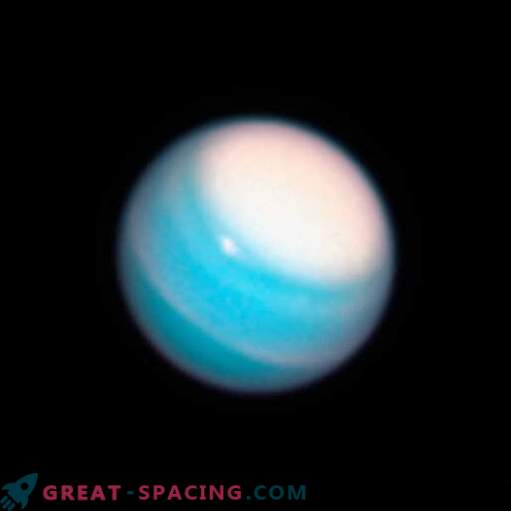
The photo of Uranus obtained by the Hubble Space Telescope in November 2018, shows an extensive and bright storm cloud cover at the north pole of the planet
It is still unclear how such storms form. But, like Jupiter’s Great Red Spot, dark vortices rotate in the anticyclonic direction and seem to pull material from deeper atmospheric levels in the ice giant.
Back in 2016, the Hubble survey reflected the growth of cloud activity on the site where a whirlwind later appeared. The images indicate that the eddies most likely develop deeper in the atmosphere of Neptune and become visible only when the top of the storm rises higher.
A photograph of Uranus, like Neptune, demonstrates a remarkable formation - a large-scale bright storm cloud cap over the North Pole. Researchers believe it originated from the unique rotation of the planet. Uranium is different from all the planets of our system, as it is not sideways.
Because of this axial tilt throughout the summer, the sun illuminates the north pole almost straight and does not set. Now the planet is approaching the middle of the summer period, and the region of the polar cap is more clearly seen. Most likely, the polar cap arose due to seasonal changes in the atmospheric flow.
A large compact methane-ice cloud can be seen near the edge of the polar storm. A narrow cloudy band surrounds the world to the north of the equatorial line. It is still not possible to understand how such bands are limited to such a narrow width, because Uranus and Neptune have extremely wide wind jets directed to the western side.
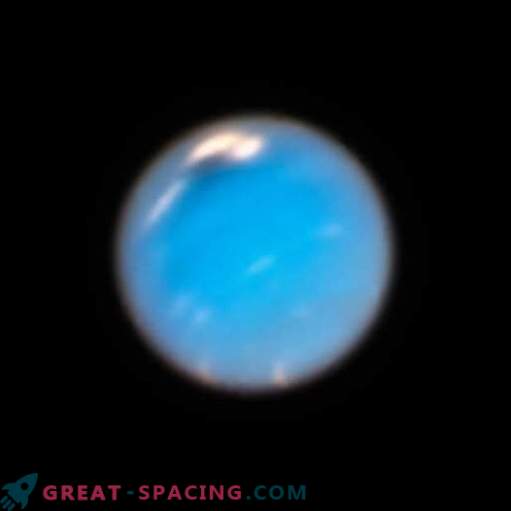
The Neptune photograph taken in September and November 2018 by the Hubble telescope shows a dark storm (top center)
Both planets belong to the ice giants. They are devoid of a solid surface layer, instead of which there is a shell of hydrogen and helium, surrounding the water-rich interior. Atmospheric methane absorbs red color, but allows dispersion of a blue-green color, because of which the planets appear blue.
New images were obtained in the long-term project of the Hubble OPAL space telescope, where global maps of the outer planets of the solar system are taken annually. The main focus is on long-term seasonal transformations, as well as the fixation of temporary events, such as dark spots.
Dark storms can be so fast that in the past they could appear and disappear during the many years of interruption of Hubble’s observations on Neptune. The study of several images does not accurately track the atmospheric features of the planets. But it is hoped that Hubble’s long-term monitoring of the outer planets will help to solve the riddles of distant worlds.

